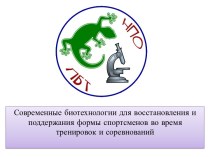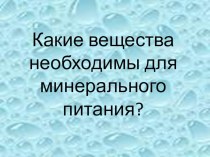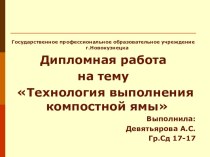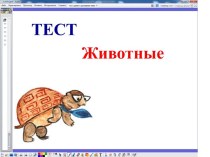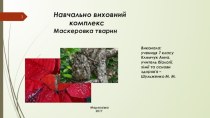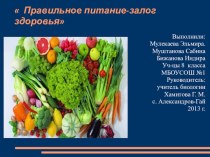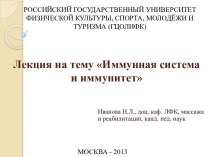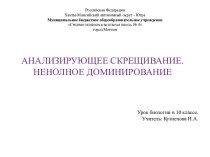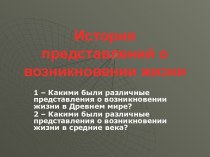Слайд 2
Unicellular organisms and some colonies can take material
from their environment by diffusion, osmosis and active trnasport.
But
in multicellular organisms all cells can not take needed material from their environment.
Therefore there is a special transport system in complex multicellular organisms.
Слайд 3
TRANSPORT IN PLANTS
In Plants, transport of materials is
provided by;
Leaves,
Stem and
Root
Слайд 4
The Leaf
Leaf blade
Petiole (Stalk)
A typical leaf consist of
;
The petiole attaches
the leaf to the stem.
Слайд 5
Plants are divided into two major groups:
Flowering Plants
Non-Flowering
Plants
Слайд 6
FLOWERING PLANTS
Flowering Plants are divided into two major
group according to their seed leaves (Cotyledons).These are;
Monocotyledons
Dicotyledons
Слайд 7
Differences Between
Monocots and Dicots
DICOTS
The leaf blade is not
single structure
MONOCOTS The leaf blade is single structure
The leaves of dicots
are network veined
The leaves of monocots have parallel veins.
Слайд 10
The Anatomical
Structure of the Leaf
The Cuticle Layer
Epidermal
Tissue
The Mesophyll Layer
The Palisade Paranchima
The Spongy Paranchima
The Vascular Bundles
(Veins)
Слайд 11
Parts of a leaf
Cuticle
It is a
waxy layer which prevent water loss from the leaf
surface
Слайд 12
Parts of a leaf
upper epidermis
It protects internal tissues
from mechanical damage and bacterial and fungal invasion
Слайд 13
Parts of a leaf
palisade mesophyll
contains many chloroplasts
Слайд 14
Parts of a leaf
spongy mesophyll
less chloroplasts for
photosynthesis
Слайд 15
Parts of a leaf
vascular bundle (vein)
Слайд 16
Parts of a leaf
lower epidermis
same as upper epidermis
except the cuticle is thinner
Слайд 17
Parts of a leaf
opening which allows gases to
pass through it to go into or out of
the leaf
stoma
Слайд 18
STOMATA
There are many stomata in epidermal tissue.
The
stomata allow the exchange of carbon dioxide and oxygen.
Water
vapour also passes out of the leaf through the stomata.
Stomata open during the day and close at night.
Слайд 21
Stomatal opening regulates by two factors:
TURGOR PRESSURE
2. CO2
CONCENTRATION
Слайд 22
TURGOR PRESSURE
Glucose molecules are produced by photosynthesis in
guard cells.
These glucose molecules increase the osmotic pressure in
this cell.
And guard cells take water and swollen by turgor pressure.
Stomata cells are opened by the effect of turgor pressure
Слайд 23
At night;
Glucose concentration decreases in guard cells.
Therefore osmotic
pressure decreases
Water passes from guard cells to the adjacent
cells.
And stomata are closed.
Слайд 25
TYPES OF STOMATA
In arid climates the stomata are
found deep of the epidermal layer. These stomata are
called lower case stomata.
At the normal humidity and temperature, stomata are found at the same level as the epidermis.These stomata are called normal case stomata
At the high humidity, stomata are found at the upper position than epidermal layer.These stomata are called upper case stomata.
Слайд 26
Functions of the leaf
Photosynthesis
Gas exchange
Transpiration
Regulation of temperature
Excretion
Слайд 27
TRANSPIRATION
Excess water is excreted from the stomata as
water vapour. This process is called transpiration.
WIND, HUMIDITY and
TEMPERATURE effect the rate of transpiration.
Слайд 28
STEM
Stem holds leaves and flowers in the air.
Some
underground stems are specialized for food storage
Слайд 29
Types of stem
Woody Stem
Herbaceous Stem
Woody stems contain thick
wood.
Plants with woody stems live more than 2
years
Herbaceous stems are soft and green. Plants with herbaceous stem live either 1 or 2 years.
Слайд 30
Vascular bundles are located at the core
of
the stem.
The xylem and phloem vessels are separated
by circular cambium layer.
Xylem vessels are found near the core
of the stem
Phloem vessels are located in the outer
portion of the stem.
In dicots,
Слайд 31
In Monocots,
They generally have herbaceous stem
Vascular bundles are scottered.
Each bundle contains
xylem and phloem.
There is no cambium between xylem and phloem vessels.
Generally stem has chloroplast
Слайд 33
The roots of plants are found underground.
They anchor
the plant in the soil and absorb water and
minerals
They transport water and minerals to the stem and other parts of plant.
Roots have no leaves and chloroplast.
ROOT
Слайд 34
There are two types of roots:
TAP ROOT
It is found in dicots.
FIBROUS ROOT
It is found in monocots.
Слайд 36
PARTS OF ROOT
Root Cap: It protects the tip
of root.
Meristematic Zone:Root grows by this part.
Alongation Zone
Maturation Zone:It
has root hairs.Root hairs increase surface area of root.
Слайд 37
TRANSPORT OF
ORGANIC AND INORGANIC
MATERIALS
IN PLANTS
Слайд 38
TRANSPORTATION PARTS IN PLANTS
In plants, transportation of materials
are provided by;
- Xylem
- Phloem
Слайд 39
PROPERTIES OF XYLEM
Transport of water and minerals from
roots to the stem and leaves
They are located at
the core of the plant
They are composed of trachea, tracheids, schlerenchyma and parenchyma.
Their cells are non-living cells
There is no cell wall among of tracheids.
The rate of transportation is rapid in xylem.
Слайд 40
PROPERTIES OF PHLOEM
Transport of glucose and other organic
compounds from leaves to the stem and root
Transport of nitrogenous compound from root to the stem and leaves.
The rate of transportation is slower than the xylem.
Their cells are living.
Phloes is composed of two types of cells: Sieve and Companion cells.
Слайд 41
6. Sieve cells contain cytoplasm but don’t have
nucleus at maturity.
7. The walls of sieve cells have
many small openings.
8. Companion cells which contain both a nucleus and cytoplasm.
9. In sieve tube materials are carried by diffusion.
Слайд 43
CAMBIUM
Phloem and xylem cells are produced by cambium
layer.
It increases diameter of stem.
Cambium layer is found in
dicot plants
Слайд 44
WATER AND MINERAL TRANSPORT
Terrestial plants absorb water and
minerals from the soil by means of their roots.
In
the root hair, inogranic and organic molecules are present at higher concentration.
Water moves from the soil to the root by osmosis than it is transported by the xylem vessels.
Слайд 45
Factors Effecting The Water Transport
Capillarity
Root Pressure
Transpiration-Cohesion Theory
Слайд 46
CAPILLARITY
Capillarity is the upward movement of liquid in
a tube of narrow diameter.
Xylem cells in plants form
a system of tubes of very small diameters.
Xylem capillarity can rise water only one meter above the ground.
Слайд 47
ROOT PRESSURE
Cytoplasm of the root cells has a
higher concentration than the water in soil.
This cause a
high osmotic pressure in the root.
This pressure drives the water into and up the xylem.
Слайд 48
TRANSPIRATION-CHOSION THEORY
According to the theory, the column of
water is not broken because of the cohesion of
the water molecules.
There is a dendency for water to flow in to the leaves to replace the transpired water.
Water will flow from the leaf veins into the leaf mesophyll.
Water flows up the stem from the root.
Слайд 49
COHESION
Cohesion is an attactive force between identical or
similar molecules.
Water is carried to the tops of the
tallest trees by means of transpiration-cohesion force.























































